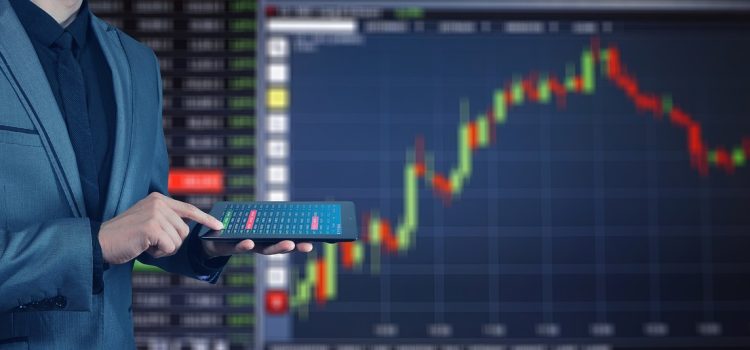
The stock market has seen a surge of relief in the past few weeks as countries begin to reopen and economies show signs of recovery. But is this rally sustainable, or are we in for another crash? We reached out to financial experts from around the world to get their insights on what’s driving the current market trends and how investors can make informed decisions. From analyzing economic data to examining historical patterns, these experts bring unique perspectives that shed light on where we stand today—and what might be coming next. Whether you’re a seasoned investor or just trying to navigate an uncertain financial landscape, read on for valuable insights into one of the most pressing questions facing investors today: Is the relief rally sustainable?
What is a relief rally?
When stock prices increase after a period of decline, it is called a relief rally. This happens when investors believe that the worst is over and that the market is starting to rebound. Sometimes, however, the rally is short-lived and prices quickly resume their downward trend.
There are several factors that can influence whether or not a relief rally is sustainable. One is the overall health of the economy. If underlying economic conditions are weak, then it is less likely that the rally will be sustained. Another factor is corporate earnings. If companies are reporting strong earnings, it may signal that the market has bottomed out and is ready to start moving up again.
Of course, no one can predict the future movements of the stock market with 100% accuracy. However, by considering these and other factors, financial experts can give you their best insights into whether or not a relief rally is likely to be sustainable.
What caused the recent relief rally in the stock market?
The recent relief rally in the stock market was caused by a number of factors, including the announcement of a new stimulus package from the U.S. government, better-than-expected corporate earnings reports, and positive economic data from China. While it remains to be seen whether or not this rally is sustainable, it has nonetheless given investors some much-needed respite from the volatility of recent months.
What do financial experts think about the sustainability of the relief rally?
When the stock market took a nosedive in March, many investors were worried that the worst was yet to come. However, the market has since rallied and is now approaching pre-pandemic levels. This has led some to wonder if the rally is sustainable.
Here’s what some financial experts have to say about the sustainability of the relief rally:
1. “The market always climbs a wall of worry.”
This phrase, coined by legendary investor Sir John Templeton, is often used to describe markets that continue to rise despite concerns about their long-term prospects. And it’s something that applies to the current situation. While there are still plenty of uncertainties surrounding the pandemic, the fact that the market has been able to withstand bad news and keep climbing is a good sign.
2. “Don’t fight the Fed.”
This piece of investment advice is also quite relevant right now. The U.S. Federal Reserve has been pumping money into the economy through its quantitative easing program, which helps to support asset prices. So as long as the Fed continues with this policy, it’s likely that the rally will continue.
3. “It’s not different this time.”
Some people have argued that this pandemic is unlike anything we’ve seen before and therefore it’s impossible to predict how markets will react. However, history shows us that markets are always resilient and tend to bounce back after setbacks. So while there may be
How long do relief rallies typically last?
A relief rally is a short-term rebound in prices that typically follows a period of sharp declines. They are often driven by short-covering, which is when investors who had bet against a particular asset close out their positions to avoid further losses. While relief rallies can last for weeks or even months, they typically don’t signal a lasting change in the underlying trend.
In the current market environment, there are a number of factors that could extend the length of the relief rally. The most important is the Fed’s decision to cut rates and inject liquidity into the financial system. This has helped to ease concerns about a potential recession and has given investors reason to believe that the recent sell-off was overdone.
Another factor is earnings season. So far, corporate results have been largely positive, with many companies beating expectations. This has provided a boost to sentiment and helped to offset some of the negative newsflow from trade tensions and geopolitical risks.
Lastly, valuations are now more attractive after the sell-off. With stock prices down sharply from their highs, there are fewer concerns about expensive valuations. This could make stocks more attractive to long-term investors who are looking for buying opportunities.
What factors will affect the sustainability of the current relief rally?
When it comes to the sustainability of the current relief rally, there are a number of factors that will come into play. First and foremost, it will depend on how well the global economy continues to recover from the pandemic. If we see a continued rebound in key indicators like employment and consumer spending, then the stock market is likely to maintain its upward momentum.
Another important factor to watch is corporate earnings. If companies continue to report strong results, that will provide further support for stock prices. Conversely, if earnings start to disappoint, that could put pressure on the market.
Another potential issue is inflation. If prices start to rise too quickly, that could spook investors and lead to a sell-off in risky assets like stocks. So far, though, inflation has remained in check despite all the stimulus that’s been pumped into the economy.
And finally, it’s worth keeping an eye on geopolitics. Tensions between the U.S. and China have simmered down for now, but any renewed trade tensions could cause uncertainty and weigh on markets.
All things considered, then, there are a number of factors that could impact the sustainability of the current relief rally. But as long as the global economy continues to improve and corporate earnings hold up, stocks are likely to remain in favor with investors.
Conclusion
Overall, the financial market’s relief rally is a positive indicator for investors, but it may not be sustainable in the long-term. Investors need to keep an eye on economic data and how global markets respond to these reports. It’s important to understand that investments do come with risks which can have serious repercussions if they aren’t handled properly. By being aware of potential risks and staying informed about global trends, investors can make wiser decisions when it comes to their portfolio and prepare themselves for any unexpected changes in the future.










